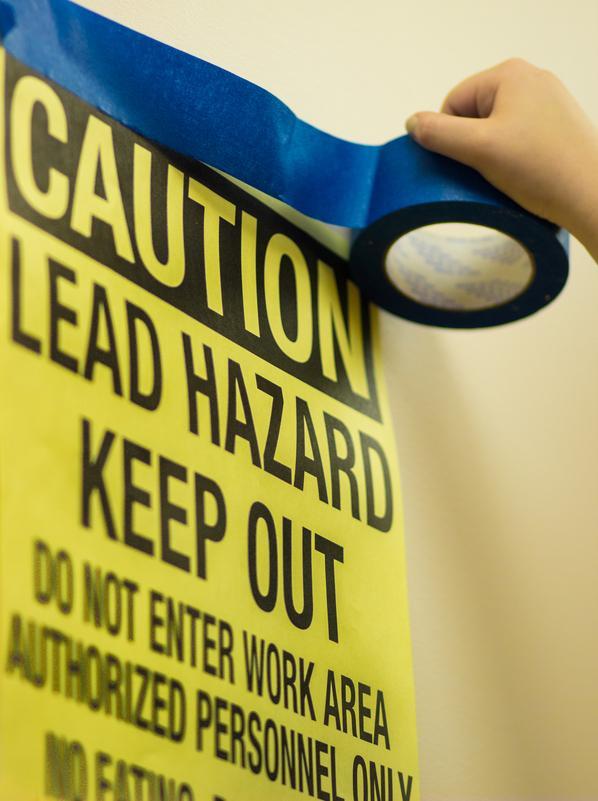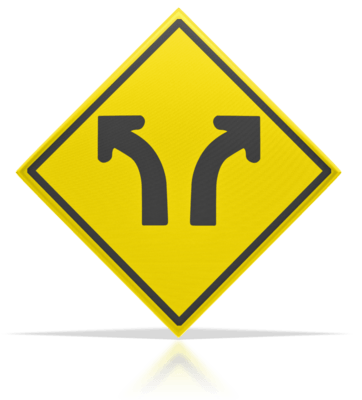Beyond Flint: Lead Paint in the News. A New Lead Paint Testing Proposal from HUD
 We've all been made aware of the lead poisoning crisis in Flint, Michigan due to extensive national news coverage of the problem, but Cleveland, Ohio has a bigger problem with lead, and unlike Flint, it has nothing to do with their water supply. Cleveland's lead poisoning crisis is a direct result of a failed decades-long campaign to attack the problem of lead paint in the city's old buildings and residences. Consider that at the height of the water-caused lead crisis in Flint in 2014, roughly 7% of its children tested positive for lead poisoning. The percentage of children in Cleveland was a shocking 14.2%, according to a March 3rd New York Times report. The article also reports that Philip J. Landrigan, a leading expert on lead and a professor of preventive medicine and pediatrics at Mt. Sinai School of medicine, the huge problem of lead in the U.S. passes mostly unnoticed, except for a few rare cases. He believes that unless Congress takes further action on the problem of lead poisoning in America's children, the problem will only escalate.
We've all been made aware of the lead poisoning crisis in Flint, Michigan due to extensive national news coverage of the problem, but Cleveland, Ohio has a bigger problem with lead, and unlike Flint, it has nothing to do with their water supply. Cleveland's lead poisoning crisis is a direct result of a failed decades-long campaign to attack the problem of lead paint in the city's old buildings and residences. Consider that at the height of the water-caused lead crisis in Flint in 2014, roughly 7% of its children tested positive for lead poisoning. The percentage of children in Cleveland was a shocking 14.2%, according to a March 3rd New York Times report. The article also reports that Philip J. Landrigan, a leading expert on lead and a professor of preventive medicine and pediatrics at Mt. Sinai School of medicine, the huge problem of lead in the U.S. passes mostly unnoticed, except for a few rare cases. He believes that unless Congress takes further action on the problem of lead poisoning in America's children, the problem will only escalate.
The Federal government started phasing out lead in gasoline in 1975, and lead in paint was banned in 1978. In 2000, a government task force proposed ending lead poisoning in children by the end of the decade. It's clear that has not happened. While blood lead levels in kids under 6 have declined significantly, there is no disputing that much work remains before we eradicate the problem completely. Recent estimates have the number of households that still have at least some lead paint on walls and woodwork is about 37 million, and another 23 million have potentially hazardous levels of lead in soil, paint chips and dust. Of those 60 million hazardous households, the CDC estimates that at least 4 million have children living in them. A half million of those children are believed to have enough lead in their systems to merit medical attention.
Unfortunately, in most cities, the affected neighborhoods are poor ones with little political clout. But experts say that state and local government concern over the costs of fixing the problem is unfounded. A 2009 study estimated that every dollar spent on removing lead hazards would result in $221 in benefits resulting from increased productivity, greater tax revenues and lower health care costs.
The U.S. is plagued by a lead paint problem that has literally been going on for decades. Millions of older homes and apartments across the country -- many housing families with small children -- contain chipping, peeling lead paint which is threatening the normal development of our nation's kids.
On Thursday, September 1st, a local Connecticut newspaper called the NewsTimes, picked up an Associated Press story on the subject. AP writer Matt O’Brien, reports that the nation's top official at the Department of Housing and Urban Development (HUD), Julian Castro, is proposing that the level of lead in children's blood that currently triggers federal action to clean up their homes, be significantly reduced. Castro made the announcement about the new proposed rule change in Providence, Rhode Island and later, toured Providence's HUD-assisted homes with the city's mayor.
The current actionable level of lead in children is 20 micrograms per deciliter of blood. Castro wants to lower the level to 5 micrograms per deciliter, saying this would allow HUD to ensure that the homes they support are as safe as possible. The new rule would also expand their investigations to include a full environmental inspection, rather than just a basic lead paint assessment, allowing them to more easily find and fix the source of lead exposure. Under the new rules, any time a child under 6 is found to have lead levels in their blood that are above the threshold, providers of HUD-assisted housing must report the case to HUD, triggering an investigation. If either lead paint or lead-infused soil are found, the provider must fix the problem immediately under penalty of law.
The revisions to the current law would align HUD's lead limits with those recommended by the CDC in 2012.
Castro made the announcement in Rhode Island because the state reportedly has the oldest rental housing inventory in the country. The Rhode Island Health Department says that even though elevated lead levels in the state's children have declined by about one-third in the past 10 years, there are still 935 Rhode Island children who will be entering kindergarten this year with elevated levels of lead in their blood which can lead to irreversible health, behavioral and learning problems.
ECOBOND® LBP, LLC is the nation’s leader in developing and distributing products that improve the protection of human health and safety from the hazards of lead in the home, workplace, and the environment. With over 15 years in patented and proven success, the ECOBOND® family of products have been extensively used in successfully treating lead hazards in over 11,000,000 tons of material while serving over 100,000 customers in the United States and Internationally.
To learn more visit www.ecobondlbp.com, view our lead paint treatment video or download our free Industry Report:http://www.LeadPaintRemovalReport.com

 Many people find it exciting to keep up with trends. Something new or different equates to fun, originality and even adventure. Very few who follow trends ever think that their behavior might risk exposure to danger. A recent popular one involved furniture and decor. The stressed treatment furniture with scratches, holes, bent nails with splotches of paint here and there suddenly became fashionable. Most of the furniture came from discarded pieces painted long ago, or from wood salvaged from old structures demolished decades before - now called reclaimed wood.
Many people find it exciting to keep up with trends. Something new or different equates to fun, originality and even adventure. Very few who follow trends ever think that their behavior might risk exposure to danger. A recent popular one involved furniture and decor. The stressed treatment furniture with scratches, holes, bent nails with splotches of paint here and there suddenly became fashionable. Most of the furniture came from discarded pieces painted long ago, or from wood salvaged from old structures demolished decades before - now called reclaimed wood. There are plenty of regulations and laws that proscribe the use and removal of lead paints. Changes to the laws have occurred since 1970 when lead's use in paint concluded. After nearly a half-century, millions of homes throughout America still contain dangerous levels of lead from paint. The reasons are numerous and in 1998, the EPA issued a memorandum, hoping it would serve to expedite the removal of lead from residential housing.
There are plenty of regulations and laws that proscribe the use and removal of lead paints. Changes to the laws have occurred since 1970 when lead's use in paint concluded. After nearly a half-century, millions of homes throughout America still contain dangerous levels of lead from paint. The reasons are numerous and in 1998, the EPA issued a memorandum, hoping it would serve to expedite the removal of lead from residential housing. When dealing with toxic lead paint, it is important to make sure that you and your family are safe from the dangerous lead particles. Two popular and proven options for dealing with lead paint in old homes are treating the paint by removing it and encapsulating, also known as covering it up.
When dealing with toxic lead paint, it is important to make sure that you and your family are safe from the dangerous lead particles. Two popular and proven options for dealing with lead paint in old homes are treating the paint by removing it and encapsulating, also known as covering it up. If you currently own or are purchasing an older home, you probably know all about the risks of lead-based paint. You know that homes built before 1978 (when the federal government banned consumer uses of lead-containing paint) are likely to have lead-based paint that was never removed properly and was probably simply painted over. You also know that exposure to lead can cause serious health problems, especially for children and pregnant women. In fact, according to the CDC, "Even low levels of lead in blood have been shown to affect IQ, ability to pay attention, and academic achievement. And effects of lead exposure cannot be corrected."
If you currently own or are purchasing an older home, you probably know all about the risks of lead-based paint. You know that homes built before 1978 (when the federal government banned consumer uses of lead-containing paint) are likely to have lead-based paint that was never removed properly and was probably simply painted over. You also know that exposure to lead can cause serious health problems, especially for children and pregnant women. In fact, according to the CDC, "Even low levels of lead in blood have been shown to affect IQ, ability to pay attention, and academic achievement. And effects of lead exposure cannot be corrected."